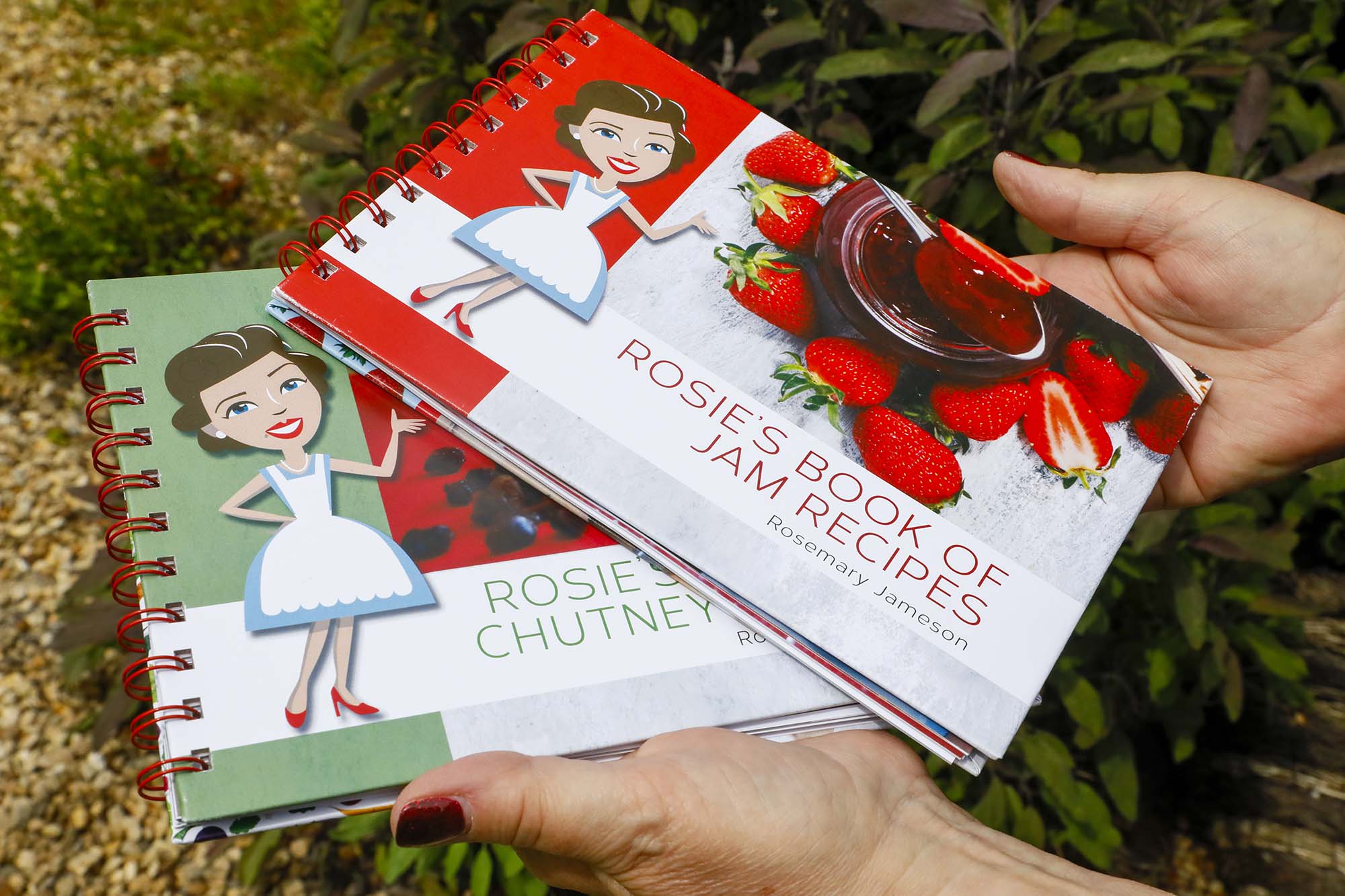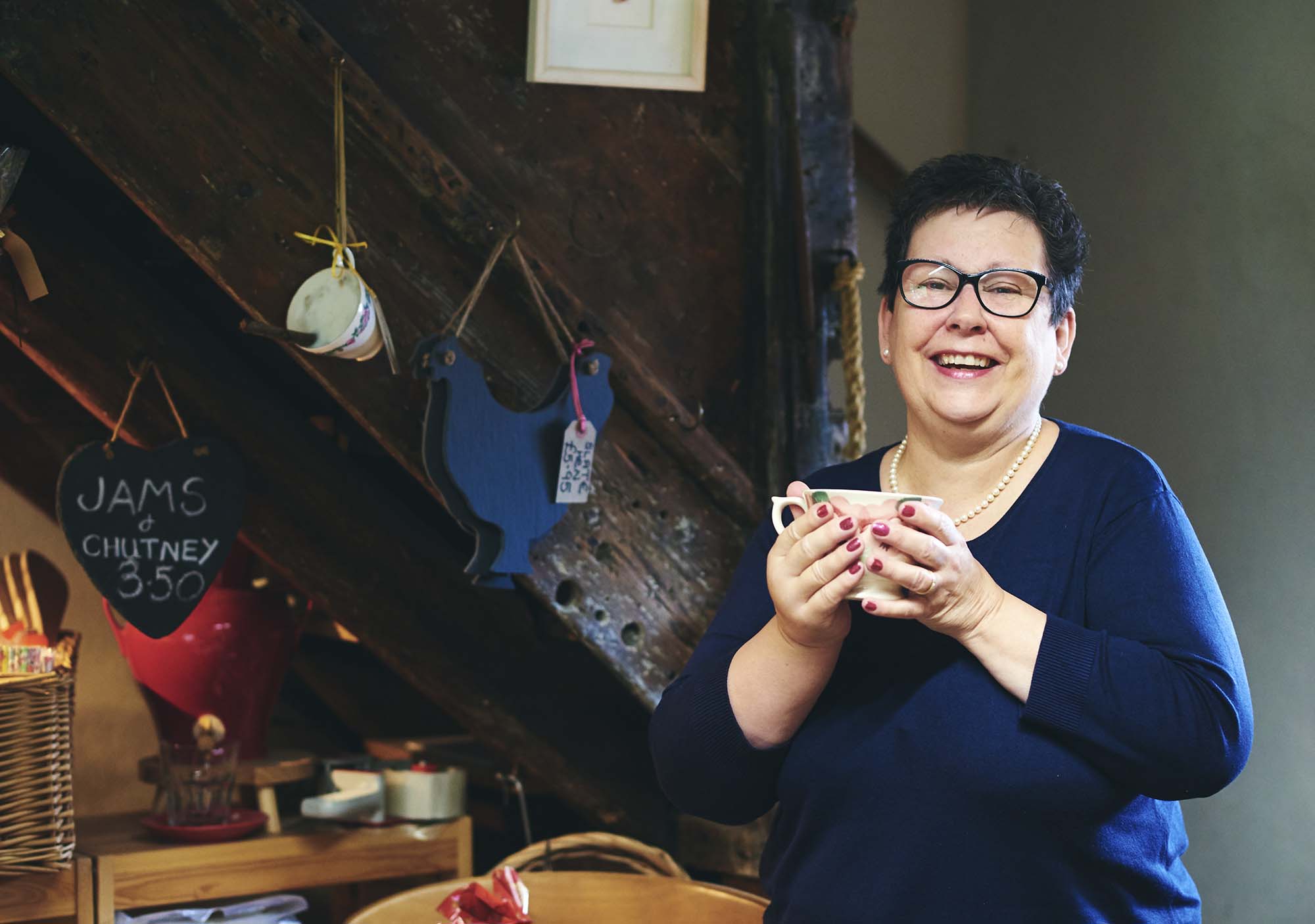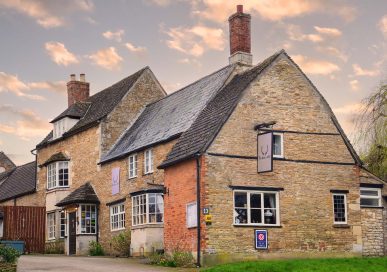Jam Packed

If you’re in a jam over how to use up a glut of fruit from your garden or you fancy foraging in the hedgerows, making jam is the answer, despite being a skill that’s somehow been left behind. Jam is in national decline, and mass market products are less ‘fruity,’ more ‘factory’ than ever before. Fear not! There’s an expert right here in the county and this month is the perfect time to preserve the taste of summer to enjoy all year round…!
How did Bob Marley like his doughnuts? With jam in. And what about his band? We hope they like jam in too. As for us, we’re especially keen on jam; not just slathering it on a thick crusty chunk of bread, or enjoying it in a Victoria sponge, but the act of making it, too. It’s not just a way of making great food to store throughout the year, but a way of preserving summer itself; taking the bounty of the hedgerows and keeping it in a jar to ensure you can enjoy a little bit of summer even in the bleak mid-winter.
Unfortunately, our passion isn’t matched by our know-how, so we’ve enlisted Rosie Jameson. Her credentials? Where do we start? Rosie is a jam maker, originally for profit as an artisan producer and latterly she concentrates on teaching and demonstrating. She’s the author of two recipe books on the subject, she has also written her autobiography In a Bit of a Jam in which the stuff features heavily, and she founded both Love Jars – which supply jars, bottles and other jam making equipment – and the Guild of Jams & Preserve Makers.
Incidentally the latter, since 2018, has been tasked by Trading Standards as the ‘primary authority’ of the preserves industry, effectively making Rosie the Chief of Police for the whole jam-making industry, from housewives to cottage industries to suppliers of the big four supermarkets. Anything else? Well, yes. In conjunction with husband Trevor the two edit Simply Preserved, which is the official quarterly journal of the Jam and Preserve Makers Guild.
With such credentials, you’d expect Rosie to be a bit of a stickler for quality jam or the scourge of jam making competitions nationwide… but actually, she’s far keener for novices to get involved with the craft and much prefers to share her knowledge and passion. Rosie began making jam at the age of four. Four years of age. Four.
By the time she attended infant school she knew about setting points, and her summer holiday soundtrack was crackle of the cellophane covers as the jars of jam cooled. A devout tomboy and free range child, Rosie was sufficiently small to forage efficiently in blackcurrant bushes and when she was a little older, she would wait for her elderly grandmother – whom she cared for – to fall asleep listening to Women’s Hour in the afternoon, then sneak off into the kitchen to make jams and chutneys. Her parents would come home horrified to find their little girl presiding over a boiling pan of fruit and sugar, having gleefully raided the plum tree in the garden… she was just 11 years old!
As a mum she always favoured home-cooked food and delighted in continuing her childhood interest. Having moved to Burley on the Hill in 2004 she still made jam for pleasure, but soon gained a reputation among friends who sought out her jam, and eventually sold it in her local community post office, then at other outlets as her artisan business flourished.
Having found herself in a bit of a jam (apologies) when struggling to find jars, Rosie and Trevor established Love Jars in 2010, and soon employed 28 people making jam and supplying equipment.
By that time she had also established the Guild and with 600 members of the group, plus breast cancer to battle in 2017, the business had to take a back seat to both Rosie’s recovery, and the creation of her first book.
Happily, she’s now in recovery, and is ready to share her knowledge again, teaching at least one group from Burley’s Old Smithy each month, as well as delivering talks to WI or community groups by request. Historically, she has also demonstrated at Radio 2’s Car Fest, The Burghley food fairs and so on…
“My mission is to encourage and enable,” says Rosie. “So all of the rules and all of the definitions apply only to commercial producers. As a home producer, the only rule is to enjoy the fun and enjoy the finished product. That’s it.”
“Having said that the technical definition of jam – the reserved description for jam sold commercially and faithful to the description – is a mix brought to a suitable gelled consistency of sugars with the pulp or purée of fruit. For artisan producers, a rule of thumb is 50% fruit and 50% sugar.”
There is, in technical terms, no official definition of preserves or conserves. Neither is there a definition for chutney. A curd, however, is an emulsion of fat or oil, egg or egg yolk, and any combination of fruit, fruit pulp, fruit purée with sugar. Marmalade’s reserved description, is the requirement that it has at least 200g of citrus fruit per kilogram. And that brings us neatly to the thorny issue of sugar, and to the problem with mass market jams.
Whilst an artisan will aim for a 50% fruit content when making jam, many commercial jams will contain the minimum permitted quantity of fruit, 35%. Artisans also use standard granulated white or sometimes unrefined sugar to make their jams with the addition of lemon juice if necessary, which all helps to create a natural set. The jams taste delicious with the extra fruitiness which sometimes comes as a surprise to those used to commercial jams.
A lot of commercial jams, as well as having less fruit content will be made with artificial liquid sugars, or even sometimes artificial sweeteners. By far the most common of these is High Frustose Corn Syrup which is a liquid artificial sugar made from waste corn stalks. It is very cheap, difficult for the human gut to metabolise and is highly addictive. It is prolific in all processed foods, not just jams and preserves.
Commercial preserve products are also set artificially with various gelling agents which gives them their characteristic uniform consistency whenever you but the product. It is an exact recipe which never varies like artisan jams. Naturally occurring sugars – the sugars in fruit and in refined cane or beet sugar – contain an easily metabolised mix of glucose and fructose.
Artisans also use standard granulated white or sometimes unrefined sugar to make their jams with the addition of lemon juice if necessary, which all helps to create a natural set. The jams taste delicious with the extra fruitiness which sometimes comes as a surprise to those used to commercial jams.
A lot of commercial jams, as well as having less fruit content will be made with artificial liquid sugars, or even sometimes artificial sweeteners. By far the most common of these is High Frustose Corn Syrup which is a liquid artificial sugar made from waste corn stalks. It is very cheap, difficult for the human gut to metabolise and is highly addictive. It is prolific in all processed foods, not just jams and preserves.
Commercial preserve products are also set artificially with various gelling agents which gives them their characteristic uniform consistency whenever you but the product. It is an exact recipe which never varies like artisan jams, leaving the body more susceptible to digestive problems and, ultimately, non-alcoholic cirrhotic liver disease. Here endeth the science bit, except to conclude that food which has been processed, even jam, isn’t as good for you as jam you make yourself.
Consumer research group Kantar reports (and we love their terminology) that there are 19.6m ‘jam users’ in the UK, with a further 10.7m ‘marmalade users.’ The UK’s favourite brand is Hartleys, which sold 6,016,000 jars in 2017. However, jam sales across the UK are down 20% and now jam has been overtaken by peanut butter as a breakfast favourite. Whilst making jam, then, might seem a lot of work, it is quick and easy and for over 20 minutes or so worth of attention, Rosie reckons you can keep yourself in jam for most of the year, at least… assuming friend and family don’t appropriate what is quite literally the fruits of your labour.
“Making jam requires fresh fruit, the highest pectin content possible, acid and heat,” says Rosie. “A ratio of 1kg fruit and 1kg sugar, plus one lemon is about right. You definitely don’t need to add water. Cook the fruit until it’s soft having removed stones.”
Rosie works with only British fruit wherever possible, and finds frozen fruit works best. Whilst she forages her local hedgerows and pick-your-own farms, it’s more important that the fruit you use is either used or frozen fast to prevent the rapid deterioration of pectin – a naturally occurring polysaccharide which serves as a gelling agent – after harvesting. Not having to use additional pectin is another great measure of good artisan jam.
“After the fruit is soft, add the sugar and stir until it has all dissolved. A lot of people are scared to use heat as they’re worried they’ll end up welding it to the bottom of the pan. This shouldn’t happen with good quality pans, but proper preserving pans help to avoid this with a thick encapsulated base, with their layer of copper to evenly distribute the heat. If you are a beginner though, just use the biggest straight sided pan that you have but only fill it one third full to give room for ‘the boil.’
“Heat up the pan and leave it for six minutes on a rolling boil,” says Rosie, warning would-be jam makers not to lose their nerve at this stage. As for the question of whether jars should be sterilised Rosie pulls a face and says ‘yes’ – which we suspect means ‘no.’
“Does anyone sterilise anything these days? If your jars are new or have been washed out thoroughly, they’ll be fine, but it’s far more important they’re bone dry, just put them upside down in a warm oven – 50-100 degrees – before you start cooking the jam.
The saucer test will let you know whether your work has paid off. Take a small quantity and leave it on a saucer for a few minutes. It’ll wrinkle up faster in smaller quantities, and if it does, it’s time to jar it.” Rosie warns not to just fill jars to the shoulder, but right to the top, then put the lid on. As the jam cools it will shrink and leave a vacuum at the top. Nothing can survive in a vacuum meaning mould can’t proliferate. Traditionally wax discs and cellophane were used to seal out moisture – the scourge of stored jam – but today’s modern jars are more effective and will ensure your jam should last at least a year. Strawberries, raspberries, blackberries, gooseberries, blackcurrants, plums… they’re all viable for jam making, and just 20 minutes of effort will keep you in jam to the tune of about seven jars.
Rosie is a prolific preserver, pickler and powderer, producing her own sauces, cordials, herb salts, mushroom powder and now her own cleaning or grooming products like furniture polish, lemon vinegar, vaporub and lip balms. Many of these are sold from her Burley premises – formerly the village’s forge. She also stocks jars, labels and lots of other accessories and of course, she’s always there to offer advice and assistance.
Easier and more rewarding than you think – not to mention better for you – homemade jam is one of those simple pleasures that living in the country affords. There’s an abundance of fruit growing in local hedgerows, all ripe for the picking… I’m tempted to point out how lucky you are… or perhaps I might say you’re a right jammy devil.
Find Out More: Rosie will host Preserving Class: Jam Making for Beginners on 31st August £85 and Preserving Class: Bottling and Canning on 10th August £85. Bespoke classes £195/ea. She’s based at The Old Smithy, Langham Lane, Burley, Oakham, Rutland LE15 7TB. Call 01572 723723 or see www.rosiemakesjam.com.








